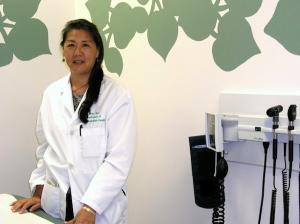Medical school's Department of Native Hawaiian Health turns 10
University of Hawaiʻi at MānoaContact:
Posted: Nov 15, 2012
2012 marks a decade since the Department of Native Hawaiian Health was established at the University of Hawai`i at Mānoa's John A. Burns School of Medicine (JABSOM).
It remains the only accredited medical school in the country with a clinical department aimed at improving the health of an indigenous people-Native Hawaiians.
The school is celebrating the 10-year milestone by reporting back to the community on some of the work done to improve the health of Native Hawaiians and other Pacific Islanders, in a gathering today, November 15, at 5:30 p.m. inside JABSOMʻs Medical Education Building Auditorium.
“This will be a night of learning, sharing and collaborating, with our community partners, stakeholders and University of Hawai’i faculty and staff expected to attend,” said Dr. J. Keawe`aimoku Kaholokula, Chair of the JABSOM Department of Native Hawaiian Health. “It is an opportunity for us to extend a mahalo (thank you) to our academic and community partners for allowing us to work together, in the spirit of laulima (cooperation), to achieve our shared vision of a healthier Hawai`i.”
Health disparities-- higher rates of disease and worse treatment outcomes -- are the major health challenge faced by the Native Hawaiian community.
The UH Mānoa medical school, under the Department of Native Hawaiian Health, established a primary care clinic, the Lau Ola Clinic, to treat Native Hawaiians and Pacific Islanders, and to train medical students to honor and work within the cultural traditions of their patients.
The school also has established medical education and research centers, including the Native Hawaiian Center of Excellence and the Center for Native and Pacific Health Disparities Research, to educate and train health experts from within the community and to seek solutions to some common health problems. UH Mānoa has based its clinical translational research program (RMATRIX) upon assisting the development of investigators focusing on reducing health differences that disproportionately impact Native Hawaiians.
Investigators affiliated with the department play important roles in RMATRIX’s campus-wide effort that leverages the work of the department’s Center for Native and Pacific Health Disparities Research and helps make research meaningful to the Native Hawaiian community. In one collaborative project, researchers found the traditional dance of Hawai`i, hula, to be a potentially beneficial for rehabilitation from heart disease. Because it was something patients were familiar with and honored, they responded enthusiastically to its use for exercise.
The medical school also has excelled in training new generations of Native Hawaiian physicians. With generous financial support from The Queen's Health Systems, UH Mānoa has recruited more than 225 men and women from disadvantaged backgrounds. Through a one-year intensive study program called `Imi Ho'ōla (the `Imi Ho`ōla Post-Baccalaureate Program), they learn how to get into and excel at medical school. Ninety-six percent of the doctors trained through the program are practicing medicine in neighborhoods in Hawai`i where they are needed the most, and 40% of them are Native Hawaiians.
For more information, visit: http://jabsom.hawaii.edu

